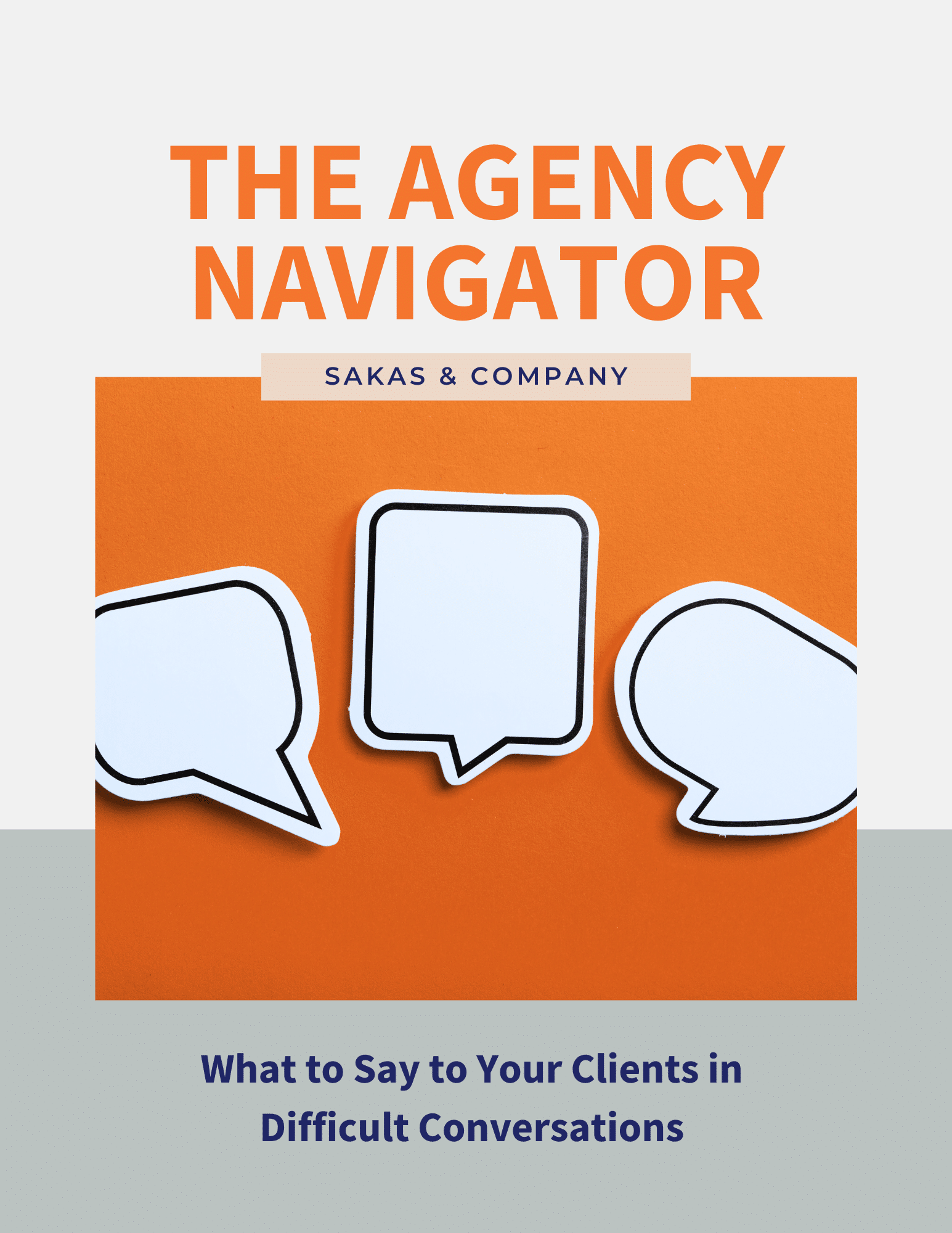Ready to get paid sooner in the sales process? It’s time to start using Paid Discovery at your agency!
Last week in Part 1, I shared what’s unique about the initial mini-projects and why Paid Discovery is important to your agency. In a future Part 3 article, I’ll share how to troubleshoot common challenges.
Today in Part 2, we’ll focus on implementation—how to get started with Paid Discovery. I’ll share advice on pricing, naming, scope, marketing, sales, and more—including tips to customize to your agency’s unique situation. Already doing Paid Discovery? Read the tips for ideas to improve!
Naming: What to call your Paid Discovery offering?
The right Paid Discovery name will depend on the scope and your agency’s brand—but to get you started, here are keywords I typically see:
- Audit
- Tech Spec (or “User Stories”)
- Mini-Strategy (or “Initial Plan”)
- Quick Wins
- Workshop (or “Mini-Workshop”)
Don’t call it “Paid Discovery” to your clients! That’s not benefit-oriented.
What’s the right name for you? Consider the scope of both the deliverable and the process, along with the benefits clients will see from buying it. Ideally, you’ll choose a name that’s branded to your agency. You’ll likely want to do a trademark search, too; ask your IP attorney for help.
Speaking of scope…
Scope: What to include in Paid Discovery?
You’ll need to find a balance on scope—not too much (you don’t want to cannibalize the value of Phase 2) and not too little (you don’t want to leave clients underwhelmed). For example:
- Some agencies deliver an audit, ranging from 4-20 pages, of certain aspects of the client’s marketing efforts.
- Other agencies do a remote or in-person workshop, ranging from half a day or a full day at the agency or at the client’s office.
- If you create a strategy during Paid Discovery, consider focusing on a certain aspect of the client’s work rather than a company-wide strategy.
- If you create a tech spec, focus on a single key client initiative—rather than technical specifications for the client’s entire organization.
Importantly, more than one person should be able to do the work. It’s OK if you’ve involved in Paid Discovery as the agency owner, especially if you’re the primary salesperson. But be careful about creating a situation where you or another team member become a single point of failure.
Pricing: What to charge for Paid Discovery?
As I noted in Part 1, I see most agencies charging less than $3,000 for Paid Discovery. The most common prices I see are between $500 to $2,500. But an agency might charge up to $10,000 for an on-site workshop at the client’s office.
As a starting point to customize your pricing, consider your typical future project or retainer. I recommend charging roughly 5-10% of that for Paid Discovery.
It depends on your target clients, of course. At the highest end, an agency specializing in marketing for national retailers charges $25,000 to $125,000 for their Paid Discovery project. That’s steep, but it’s a fraction of the future multi-million dollar annual retainer.
Pricing also depends on how you frame the name and the scope. For instance, an “audit” is generally positioned as less valuable than a “strategy.” But you also don’t want to over-promise (or over-sell) a “strategy” in your initial project; if you give everyone what they need now, they won’t be interested in a followup engagement.
Should you credit the Paid Discovery fee toward your Phase 2?
Some agencies do, some agencies don’t. If you offer to credit the initial mini-project to a future engagement, I recommend setting a reasonable deadline to motivate action. Most deadlines are between 2-6 weeks.
For instance, you might credit 100% toward a Phase 2 project or retainer if they move forward within a month of receiving the Paid Discovery deliverable. Be sure to adjust for your client base; small clients might commit within two weeks, while big clients might need two months.
You can always relax the deadline if someone needs an extra week, but you don’t want your default to be too long. Long deadlines encourage procrastination, and also mean your team needs to re-learn the client all over again.
Tip for serving enterprise clients: Fit the PCard limit
Do you focus on enterprise clients? You may be able to bypass Procurement during this initial phase. How? Managers at large companies typically have a PCard—a corporate credit card—that doesn’t require pre-approval.
Price your Paid Discovery project at less than the PCard purchase limit, and you’ve skipped needing a Purchase Order (PO) to start. The exact limit will vary by company and by manager’s seniority; for instance, a CMO will typically have a higher limit than a director.
Marketing advice: How to frame Paid Discovery on your website
You can make your Paid Discovery process a key part of your marketing efforts. For most agencies, it will be the first step in your overall client delivery process.
For messaging, consider the benefits your clients get from doing the initial mini-project. (For examples, see my list in the Part 1 article.)
Don’t hide that there’s more to come—you can frame it as an initial step, but don’t forget to describe how the deliverable is “portable.”
Sales advice: How to frame Paid Discovery in your sales process
It’s important that you frame Paid Discovery as a benefit to the client. (I list various benefits in last week’s Part 1 article, and your agency will likely identify even more that are specific to your firm.)
But sometimes clients ask to skip ahead… and others refuse to do it.
What if a prospective client needs Paid Discovery… but refuses to do it?
If a prospective client needs Paid Discovery but won’t pay, you’ll have to decide whether to stand firm in requiring the step. I recommend pushing back, with an argument based on the benefits the client will see.
As Blair Enns of Win Without Pitching notes, sales is a “polite battle for control.” That is, you’re setting an important precedent that impacts the future of the entire relationship.
What if a client reasonably asks to skip it?
If a strong-fit client wants to start directly with a larger project or retainer, that’s easier. Yes, you’re welcome to jump ahead without Paid Discovery. After all, the point of Paid Discovery process is to get to the bigger engagement.
But be careful if you choose to skip ahead. Do you know enough to accurately quote the new sales proposal? If not, you risk moving too fast without enough information.
How does the followup sales proposal fit into Paid Discovery?
Don’t hide that there’s more to come! As I shared in Part 1, your Paid Discovery deliverable should lend itself to a clients asking for a proposal to move things forward.
A client in Texas tells his agency’s prospects that the initial $2,000 scope will cover key priorities. If the client wants broader strategy and implementation help, they’re glad to share a proposal. At least 90% of the Phase 1 clients request the proposal, and 90% of those choose to move forward with some sort of a Phase 2.
Think about how to frame your Paid Discovery offering as the first step in a client-centric story that makes your client the Hero.
Next: Part 3 on Advanced Tips
In a future Part 3 article, I’ll share how to troubleshoot problems as you implement Paid Discovery.
Don’t miss out! To get updates on Paid Discovery (and more), be sure to subscribe to my agency business tips. Several agency owners have told me it’s one of the only emails they read every week—sign up here.
Want custom advice as you start (or improve) your agency’s Paid Discovery process? I’m glad to confirm if I’m the right person to help—please reach out.
Question: What’s your next step as you start using Paid Discovery at your agency?
Photo credit: Strasburg Rail Road tool shop by Karl Sakas


